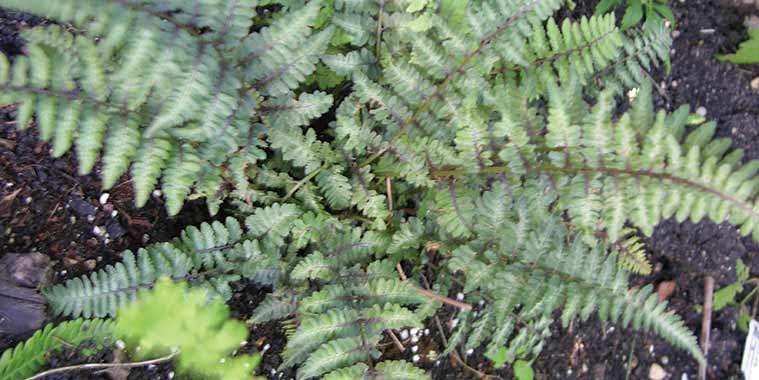Last season, garden centres were chock full of Boston ferns in pots for hanging and growing outdoors and later, in our homes. This year, we may see the selection expand, as ferns have become one of the latest trends.
Indoor gardeners appreciate ferns as they are shade loving plants, happy in low light. Careless waterers will be disappointed, though, because these ferns love moisture. Remember, Boston ferns come from the rainforest, where the air is humid and the soil is soaked daily. The soil in rainforests is extremely permeable, so the fresh rain drains away quickly, leaving the soil pleasantly moist. To keep your fern happy, you must be moisture sensitive, keeping the soil damp but not wet.
Under-watering will see the leaves turn brown and drop off the stems. To restore, cut off the dead stems and, with proper care, new fronds will emerge.
Watering issues aside, Boston ferns are not a lot of trouble. You can keep them to a manageable size by growing them in smaller containers. An increase in pot size will mean a bigger plant.
Medium light is all they need, so you can place them 7 to 10 feet from a south-facing window or a bit closer if facing north. Keep them from drafts or from hot air vents and treat them with a little misting daily if you can. Fertilize with a water-soluble fertilizer if the leaves begin to lose their colour.
Ferns in the garden
The most common fern, locally, is the so-called native fern, otherwise known as ostrich fern and sometimes as fiddlehead fern (Matteucia). (Native fern is quite a misnomer because there are actually about 30 species of native ferns in Manitoba).
These ferns travel, so if you put them in your garden be prepared for a grove of them. On the other hand, if you have a damp, shady corner where nothing much else wants to grow, they can be useful. They are certainly beautiful in the springtime although they can become a bit ragged in late summer, especially if not getting enough water.
Lady fern (Athyrium filix-femina) looks a little like Ostrich fern, but is smaller, growing 18 to 24 inches tall. It is not invasive, likes a moist, slightly-acid soil (typical of shade plants) in a sheltered location.
Japanese painted fern, with its silvery and burgundy leaves, bring eye relief to a shade garden. For a colour contrast, you may be lucky enough to find the Regal Red variety that has deeply burgundy fronds with a silver varnish.
The beautiful northern maidenhair fern (Adiantum) has an arching form with tiny fan-shaped, scalloped leaves on delicate, hair-like branches. It does very well in a hanging basket thanks to its downward arching fronds, but it is rated zone 3 and can be grown in your garden. Its botanical name, Adiantum, comes from the Greek, adiantos, meaning unwetted, as the leaves repel water. It grows slowly in a clump and will not travel.
Ferns in pots
Asparagus ferns are also native to Manitoba, but watch this summer for an interesting but tender relative, Asparagus densiflorus, ‘Myers Fern’, also known as foxtail fern. It has long fronds that are shaped like — you guessed it — fluffy fox tails. Okay, so it’s not really a fern — more of an asparagus (inedible) but it looks ferny. The native asparagus fern, on the other hand, is totally edible when its fronds first emerge from the soil, but the adult, somewhat spiny fern itself can also be grown indoors in a pot.
A beautiful fern with a slightly different profile is the soft shield fern. Its leaves are more rounded and feathery looking. It is rated zone 5 or higher so it is safest to bring inside in winter if you want to keep it.
Some ferns, such as the holly fern, have distinctly unfern-like looking leaves. The holly fern’s leaves are wide and sword like.
Every kid thrills to the responsiveness of sensitive fern, a plant that again can be invasive under the right conditions, but that will grow in slightly acidic, boggy soils. Not really a fern, it is a member of the pea family and can be toxic for pets and kids, so best put it in a pot. It is a great novelty plant for the leaves’ habit of closing, so that it looks like it is shrinking away from any touch. The foliage also closes at night.
Most ferns live 10 to 15 years. They are well worth growing, indoors or out.
Dorothy Dobbie is the owner of Manitoba Gardener magazine. Call 204-940-2700 for a subscription. Listen to her weekly radio show on CJNU 93.7 FM, also available on internet streaming services.



